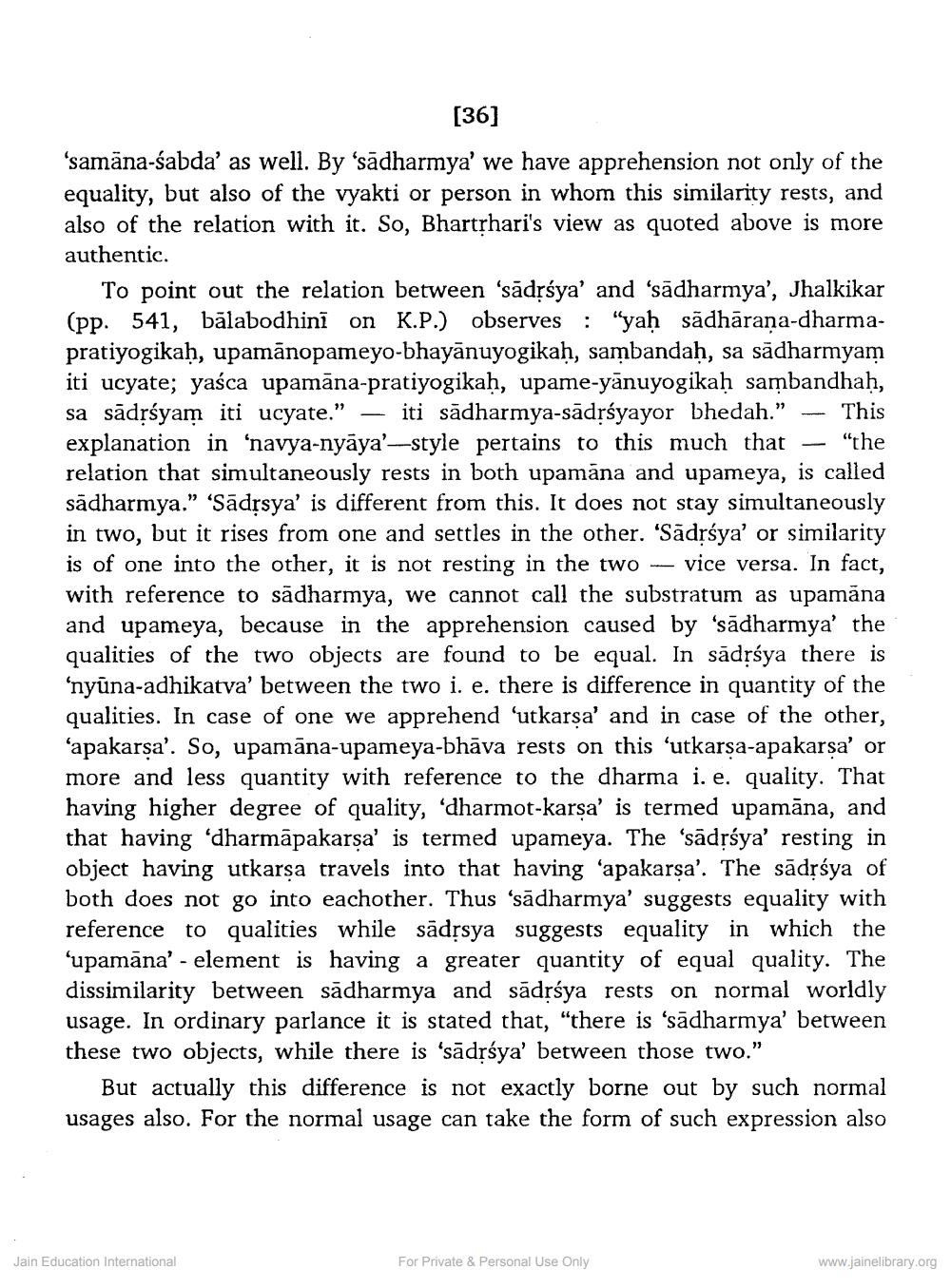________________
[36]
'samāna-sabda' as well. By 'sādharmya' we have apprehension not only of the equality, but also of the vyakti or person in whom this similarity rests, and also of the relation with it. So, Bhartphari's view as quoted above is more authentic.
To point out the relation between 'sādrśya' and 'sādharmya', Jhalkikar (pp. 541, bālabodhini on K.P.) observes : "yaḥ sãdhāraṇa-dharma. pratiyogikah, upamānopameyo-bhayānuyogikah, sambandaḥ, sa sādharmyam iti ucyate; yasca upamāna-pratiyogikah, upame-yānuyogikaḥ sambandhah, sa sādrśyam iti ucyate.” – iti sādharmya-sādrśyayor bhedah.” – This explanation in ‘navya-nyāya'-style pertains to this much that - "the relation that simultaneously rests in both upamāna and upameya, is called sādharmya." "Sadęsya' is different from this. It does not stay simultaneously in two, but it rises from one and settles in the other. 'Sādrsya' or similarity is of one into the other, it is not resting in the two - vice versa. In fact, with reference to sādharmya, we cannot call the substratum as upamāna and upameya, because in the apprehension caused by 'sādharmya' the qualities of the two objects are found to be equal. In sādịśya there is ‘nyūna-adhikarva' between the two i. e. there is difference in quantity of the qualities. In case of one we apprehend 'utkarsa' and in case of the other, 'apakarsa'. So, upamāna-upameya-bhāva rests on this ‘utkarsa-apakarsa' or more and less quantity with reference to the dharma i. e. quality. That having higher degree of quality, dharmot-karsa' is termed upamāna, and that having dharmāpakarsa' is termed upameya. The 'sādrśya' resting in object having utkarsa travels into that having 'apakarsa'. The sādrśya of both does not go into eachother. Thus 'sādharmya' suggests equality with reference to qualities while sādrsya suggests equality in which the 'upamāna' - element is having a greater quantity of equal quality. The dissimilarity between sādharmya and sādrśya rests on normal worldly usage. In ordinary parlance it is stated that, "there is 'sādharmya' between these two objects, while there is 'sādrśya' between those two."
But actually this difference is not exactly borne out by such normal usages also. For the normal usage can take the form of such expression also
Jain Education International
For Private & Personal Use Only
www.jainelibrary.org




